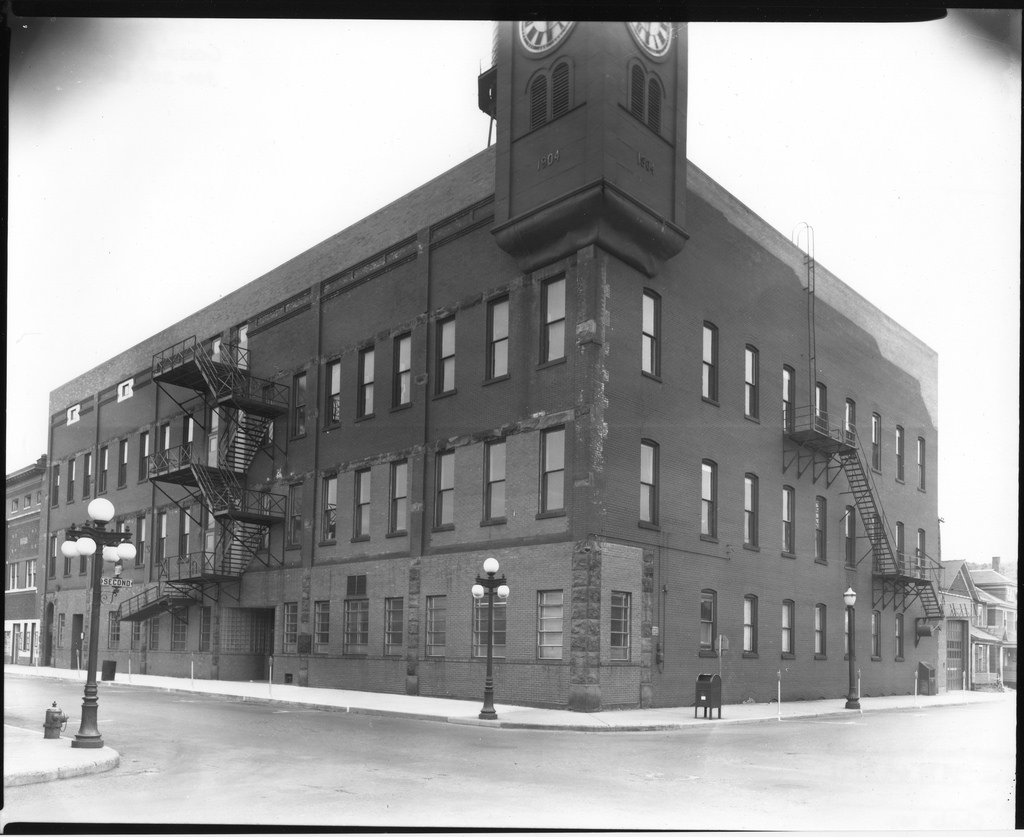By ERIC FREEDMAN
Capital News Service
LANSING — Two Upper Peninsula sites have been added to the National Register of Historic Places– one culturally important to members of the Lac Vieux Desert Band of Lake Superior Chippewa Indians and the other related to a strike important to labor and women’s history.
Rice Bay in Gogebic County is a traditional wild rice-growing area covering a quarter-mile-square on northeastern Lac Vieux Desert, a lake straddling the Michigan-Wisconsin border.

Rice Bay on Lac Vieux Desert. Credit: National Register of Historic Places.
And the 128-year-old Braastad-Gossard Building in downtown Ishpeming served as a department store and a factory that manufactured women’s undergarments before being renovated for an interior mall and offices.
“The National Register is the official list of the nation’s historic places worthy of preservation,” according to the National Park Service, which administers the program.
Lac Vieux Desert is the headwaters of the Wisconsin River, and most Michigan wild rice sites are within 10 miles of the state border. Forested hilly terrain, with cottages and seasonal resorts, and swampland surround the 6.6-square-mile lake.
Rice Bay, which borders the Ottawa National Forest, is part of a “wild rice district” with hundreds of places, including more than 300 in Wisconsin but many fewer in Michigan.
The nomination says much of Rice Bay is seasonally covered with wild rice — an aquatic grass that is culturally important to the tribe, which has “managed and harvested the wild rice bed for generations.”
It said, “Although the cultivation of wild rice in paddies began in the 1960s, most rice in the district is still procured from wild stands in the traditional manner — both for personal as well as commercial use — by hand from canoes, in a process known as knocking. This
includes the rice harvested at Lac Vieux Desert.”
The nomination also warned of threats to wild rice there, including pollution from agricultural run-off, a fungus, emissions from mining operations and changing lake levels.
In Ishpeming, the sandstone-trimmed brick Braastad-Gossard Building dates to 1888 and was expanded in 1903-04, according to the nomination submitted by the Michigan State Housing Development Authority.
It won National Register status for its connection with historical events and people, including industrial and social history and the “industrial pattern of textile plants setting up shop in mining towns to take advantage of a potentially large and low-cost labor force of women from the mining families who would be willing to work to supplement the family income,” the nomination said.

Braastad-Gossard Building in Ishpeming. Credit: Flickr.
The original owner was Frederick Braastad, a mayor and long-time local business and mine owner, and his department store was a leading commercial institution until its closing in the early 1920s, the nomination said.
It quoted a delivery wagon driver for the store as saying, “You could buy anything in the store…Flour, straw, hay, furniture, toys, fruit, butter, watermelon, carpets, clothes, grapes, pins, needles. I guess you could buy a mine in that store if you wanted to.”
The H.W. Gossard Co. then used the building as a factory to make corsets and bras. With a peak of 659 employees, it was Ishpeming’s leading employer for a time.
The factory was the scene of a 1949 strike “that is important in UP history for the leading role played by women in beginning and carrying out the strike,” the nomination said. Workers represented by the International Ladies Garment Workers walked off the job in a dispute over wages and other issues.
Between April and August of that year, a local newspaper wrote that “most strikes are inspired by the Communists,” the Ishpeming Chamber of Commerce asked Gov. G. Mennen Williams to send troops to reopen the factory — Williams refused — and police arrested picketers.
The strike was settled after the company agreed to a wage hike and union shop.
A local writer later said, “Unknown to the strikers at the time, they had earned their place in UP history. This was the first time women had taken up picket signs and went on strike in the UP.”
To qualify for the National Register, sites must be significant “in American history, architecture, archeology, engineering and culture” and if they “possess integrity of location, design, setting, materials, workmanship, feeling and association.” They must be “associated with events that have made a significant contribution to the broad patterns of our history or with the lives of significant persons in our past.”
Under federal law, listing generally doesn’t limit how owners use their property, although state and local preservation laws may impose restrictions, according to the Park Service. Listed sites are taken into consideration in planning federal and federally funded projects, and owners may qualify for tax credits and historic preservation grants.
Listed sites are taken into consideration in planning federal and federally funded projects, and their owners may qualify for tax credits and historic preservation grants.